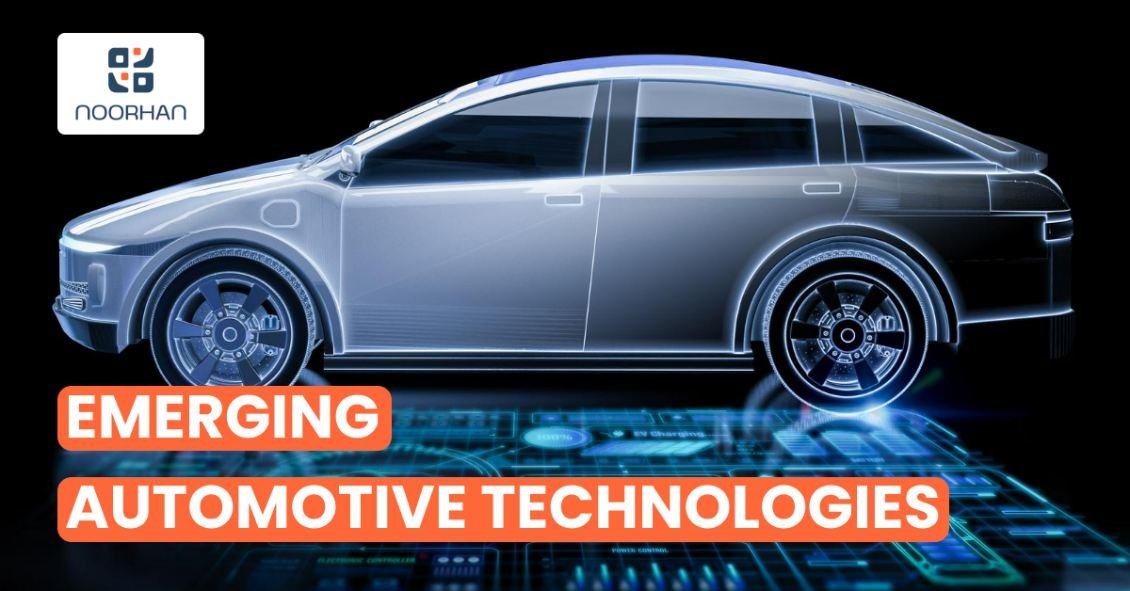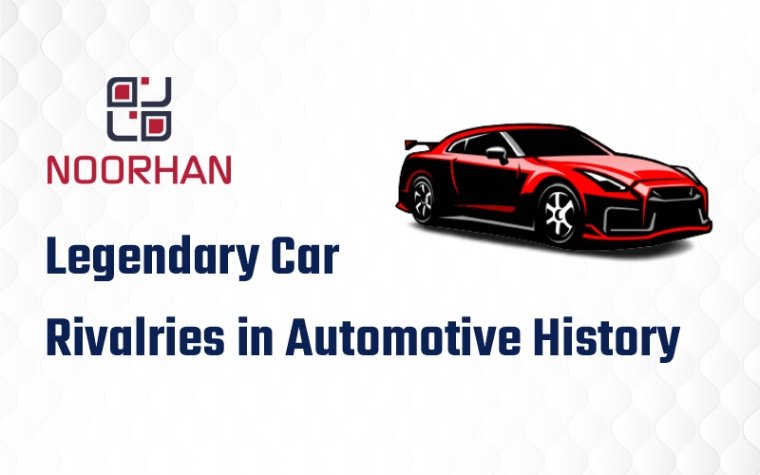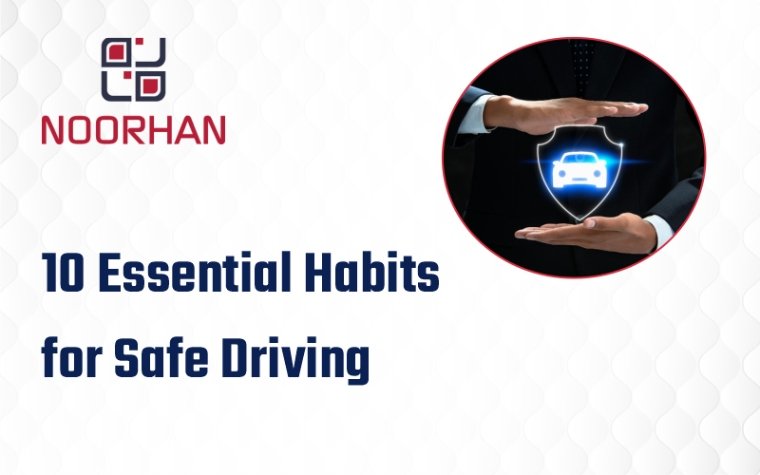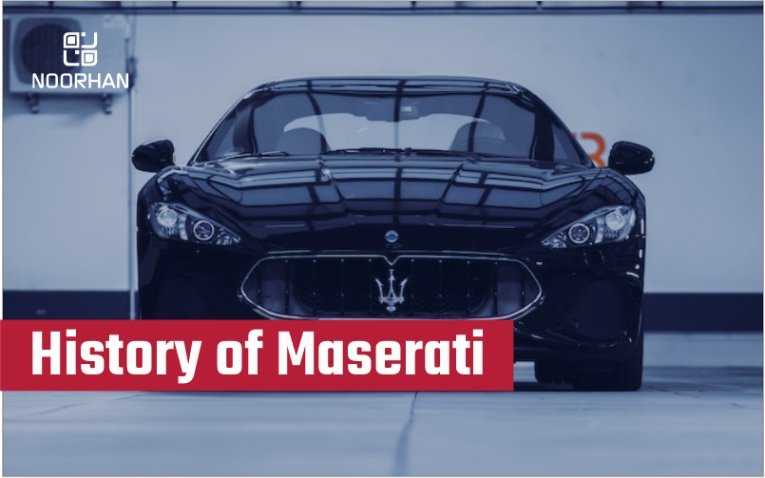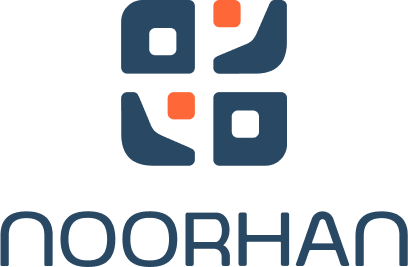-
1. ADAS & Autonomous Driving1. ADAS & Autonomous Driving
-
2. Electric & Hybrid Vehicle Advancements2. Electric & Hybrid Vehicle Advancements
-
3. Connected Car Technologies3. Connected Car Technologies
-
AI & ML in VehiclesAI & ML in Vehicles
-
5. Advanced Materials & Manufacturing Techniques5. Advanced Materials & Manufacturing Techniques
As we approach 2025, the automotive industry is poised for a revolutionary shift. The United Arab Emirates (UAE), a global leader in embracing technological advancements, is at the forefront of these changes. With its focus on sustainability, innovation, and smart city development, the UAE is uniquely positioned to capitalize on the latest automotive technologies.
From autonomous vehicles to artificial intelligence, the innovations set to emerge by 2025 will redefine how we think about transportation. This comprehensive guide delves into the top five emerging technologies that are expected to transform the automotive landscape in the UAE and beyond.
1. Advanced Driver Assistance Systems (ADAS) and Autonomous Driving
The Evolution of ADAS in the UAE
Advanced Driver Assistance Systems (ADAS) have evolved significantly in recent years, and by 2025, they will become a cornerstone of automotive safety and convenience. These systems are particularly crucial in the UAE, where ensuring road safety remains a top priority.
Key Features of ADAS in 2025:
- Enhanced Collision Avoidance: Utilizing advanced sensors and AI algorithms, ADAS will predict and mitigate potential accidents more effectively than ever before.
- Lane-Keeping Assistance: Vehicles will autonomously adjust their position to maintain safe lane discipline, even on high-speed roads like Sheikh Zayed Road.
- Adaptive Cruise Control: These systems will dynamically adjust speed based on real-time traffic conditions, offering a smoother and safer driving experience.
- Traffic Sign Recognition: Cars will detect and respond to road signs, ensuring compliance even in complex urban environments.
Autonomous Driving Progress
| Autonomous Driving Levels | Expected Implementation in the UAE |
|---|---|
| Level 2 (Partial Automation) | Common in consumer vehicles |
| Level 3 (Conditional Automation) | Limited to smart city zones and designated areas |
| Level 4 (High Automation) | Testing phase in controlled environments |
Case Study: Dubai’s Autonomous Transportation Strategy
The strategy emphasizes integrating autonomous taxis, buses, and shuttles into urban transport systems. By 2025, these vehicles are likely to operate in specific zones like Business Bay and Dubai Marina, making daily commutes smarter and more efficient.2. Electric and Hybrid Vehicle Advancements
The Electric Revolution in the UAE
Electric vehicles (EVs) are rapidly gaining traction worldwide, and the UAE is no exception. With its commitment to sustainability and reducing carbon emissions, the nation is accelerating EV adoption. By 2025, several advancements will make EVs more practical and accessible.
Key EV Developments by 2025:
- Extended Range: Batteries capable of covering up to 800 km per charge will eliminate range anxiety, even for long trips between emirates.
- Faster Charging Infrastructure: Ultra-fast chargers will enable 80% charging in under 20 minutes, making EVs suitable for fast-paced lifestyles.
- Affordable EV Models: Leading automakers are expected to introduce budget-friendly options, catering to middle-class families in the UAE.
Hybrid Technology Innovations
Hybrid vehicles continue to bridge the gap between traditional internal combustion engines and fully electric cars.
| Hybrid Type | Advantages for UAE Drivers |
|---|---|
| Plug-In Hybrids | Allow emission-free city driving and petrol backup for long trips. |
| Mild Hybrids | Enhance fuel efficiency on highways, ideal for intercity travel. |
| Full Hybrids | Offer the best of both worlds for varied driving conditions. |
Case Study: Abu Dhabi’s EV and Hybrid Push
Abu Dhabi is spearheading the green mobility revolution with plans to deploy 100 EV charging stations by 2025. This move is expected to increase EV adoption, complementing the emirate’s long-term vision for sustainable urban development.
3. Connected Car Technologies
The Internet of Vehicles (IoV) in the UAE
Connected cars represent the future of smart mobility, integrating vehicles into the broader Internet of Things (IoT) ecosystem. By 2025, these cars will communicate seamlessly with other vehicles, infrastructure, and digital devices.
Key Connected Car Features:
- Real-Time Navigation Updates: Integrated systems will reroute drivers dynamically based on live traffic conditions and hazards.
- Vehicle-to-Vehicle (V2V) Communication: Cars will share data to prevent collisions and optimize traffic flow.
- Vehicle-to-Infrastructure (V2I) Connectivity: Vehicles will interact with smart city infrastructure, such as adaptive traffic lights and parking systems.
- Enhanced Infotainment Systems: Seamless streaming, voice-activated controls, and gaming options will cater to passengers’ entertainment needs.
5G Integration in Automotive technologies
The UAE’s advanced 5G network will unlock the full potential of connected car technologies.
| 5G Benefits | Impact on Drivers |
|---|---|
| Ultra-Low Latency | Enables real-time responses for safety-critical systems. |
| High Bandwidth | Supports high-definition streaming and cloud-based services. |
| Reliable Connectivity | Ensures seamless operation across the UAE’s urban and desert areas. |
Case Study: Dubai’s Smart City Initiative
Dubai’s Smart City program incorporates connected vehicles into its urban planning. By 2025, these cars will be integral to efficient traffic management and smart parking systems, enhancing the overall commuting experience.
4. Artificial Intelligence (AI) and Machine Learning (ML) in Vehicles
AI-Powered Driving Experiences
AI is transforming how vehicles interact with their drivers, offering personalized and proactive solutions.
AI Applications in 2025 Vehicles:
- Predictive Maintenance: Systems will monitor vehicle health and alert owners about potential issues before breakdowns occur.
- Personalized Settings: Cars will adjust seats, climate, and infotainment based on individual preferences.
- Voice Recognition Systems: Advanced AI will make interactions more intuitive and human-like.
- Driver Emotion Detection: AI will assess driver stress levels and suggest actions to improve safety.
Machine Learning for Vehicle Optimization
Machine learning (ML) enables continuous improvement in vehicle performance, offering tailored benefits for UAE drivers.
| ML Application | Advantage |
|---|---|
| Route Optimization | Minimizes travel time during peak hours. |
| Battery Management | Optimizes EV performance in extreme temperatures. |
| Driving Behavior Analysis | Enhances safety by providing real-time feedback. |
Case Study: Masdar City
Masdar City, a sustainability-focused urban development in Abu Dhabi, is pioneering the use of AI in transportation. By 2025, the city will deploy AI-enhanced electric vehicles to demonstrate how smart technologies can coexist with sustainable urban living.
5. Advanced Materials and Manufacturing Techniques
Lightweight Materials Revolution
Reducing vehicle weight is crucial for enhancing fuel efficiency and performance. By 2025, automakers will increasingly use advanced materials to achieve this goal.
Key Materials:
- Carbon Fiber Composites: Offer strength without the added weight.
- High-Strength Aluminum Alloys: Provide durability while being lightweight.
- Nanomaterials: Improve thermal resistance and structural integrity.
3D Printing in Automotive Manufacturing
3D printing is revolutionizing automotive production, enabling faster development cycles and customization.
| Application | Benefit for the UAE Automotive Industry |
|---|---|
| Rapid Prototyping | Accelerates the design and testing of new models. |
| Custom Parts Manufacturing | Provides bespoke solutions for luxury car owners. |
| On-Demand Manufacturing | Reduces inventory costs for manufacturers and dealers. |
Case Study: Strata Manufacturing
Strata, based in Al Ain, is applying its expertise in advanced aerospace materials to automotive manufacturing. By 2025, its lightweight components could redefine efficiency standards in the automotive sector.
Conclusion: Shaping the Future of Mobility in the UAE
The UAE is not merely adapting to emerging automotive technologies; it is leading their implementation. With advancements in autonomous driving, electric vehicles, connectivity, AI, and materials science, the nation is building a transportation ecosystem that aligns with its sustainability and innovation goals.
For consumers, these technologies promise safer, more efficient, and enjoyable journeys. For businesses, they open doors to new markets and opportunities. As the UAE accelerates toward 2025, its automotive industry is set to be a global exemplar of innovation and progress.

